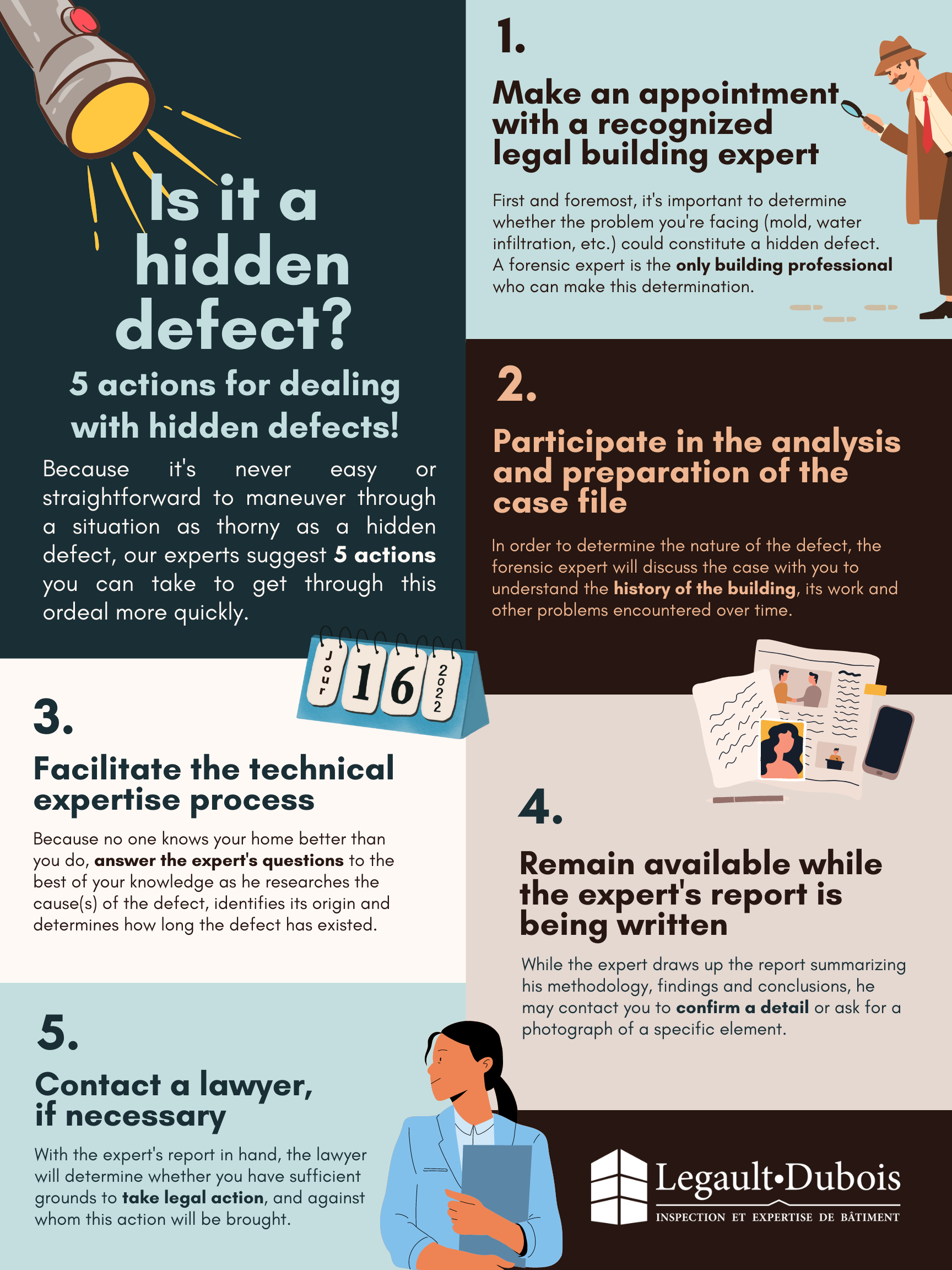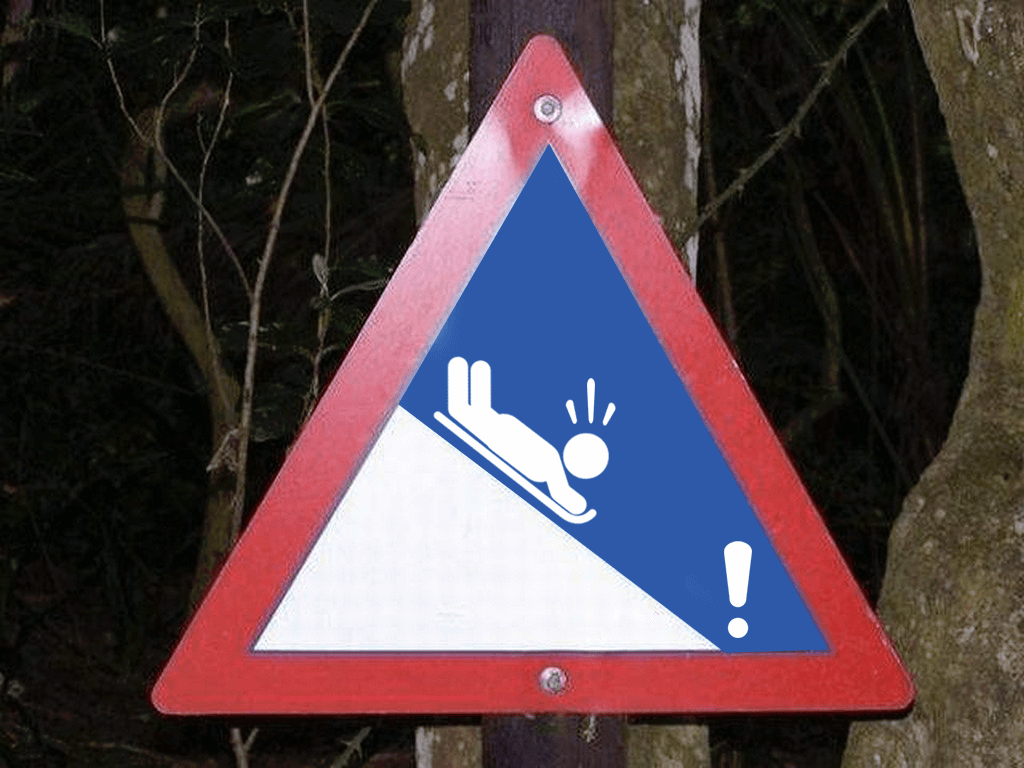Did you know that the slope of the land around the building has an important…

Hidden defect: what is a hidden defect in a house?
Did you know that the percentage of home sales without a legal warranty has jumped from 17% in 2014 to 26% in 2021? And when we add to that the similar increase in purchase offers without inspections, it’s no wonder we’re getting so many calls from new homeowners fearing they’re dealing with a hidden defect… but finding themselves with no recourse whatsoever. But what is a hidden home defect? Read our article as our technical-legal experts explain what a house hidden defect is.
What is a hidden defect in a house?
Our legal experts are there to help you with all
problematic legal situation you might face!
Let’s start with a definition. A hidden home defect is defined as an unseen defect or problem affecting the building. For a defect to be considered a hidden defect, it must meet certain conditions. For example, the defect must be non-apparent, i.e. it must not be possible to detect it by non-invasive professional inspection. Also, the defect must be sufficiently serious to render the property – the house in our case – unfit for its intended use, or at the very least considerably diminish its value. Finally, the defect or its conditions must have existed at the time of the sale, which means that it cannot be the result of subsequent bad faith on the part of the buyer.
Naturally, when a latent defect is discovered, the buyer can usually take legal action against the seller to claim various damages, depending on the case: repair of the defective item, its replacement or termination of the sales contract. This legal process is possible by virtue of the legal warranty set out in the Civil Code of Quebec, a warranty that has been sidelined in recent years, with sometimes disastrous consequences.
In a real estate transaction, there’s no need to include the warranty on the promise to purchase, as it doesn’t come without one. On the contrary, sellers are required to state that “the sale is made without legal warranty, at the risk and peril of the buyer”. With this note on the offer to purchase, it becomes impossible for the buyer to sue the seller if ever – and we never want that – a problem arises after the purchase. In fact, the only recourse then available is for buyers to prove that sellers deliberately concealed the truth about a problematic aspect so important that it could have been considered a hidden defect if the warranty applied. But even then, you have to be able to prove the sellers’ intention, which is not always easy to do…
In short, a hidden defect is a major defect present at the time of the transaction that exists only through the legal warranty. So when the time comes to buy a new house, condo or other building, we strongly recommend that you don’t make an offer on a house sold without a legal warranty. On the contrary, put all the chances of making an informed transaction on your side. The first way to do this is to ask for and carefully consult the seller’s declaration, which lists any defects that could diminish the value of the building or affect its use.
Another excellent tool is a pre-purchase inspection. Its report will validate the condition of the property and allow you to either go ahead with your offer to purchase, demand corrective work, negotiate the price in your favor or simply withdraw from the transaction. So don’t hesitate to contact us: our inspectors are here to give you the straight goods on what may be your next home!
Download for free our checklist on how to deal with hidden defects by clicking on the image.
What is a hidden defect in a house?
Our legal experts are there to help you with all
problematic legal situation you might face!



